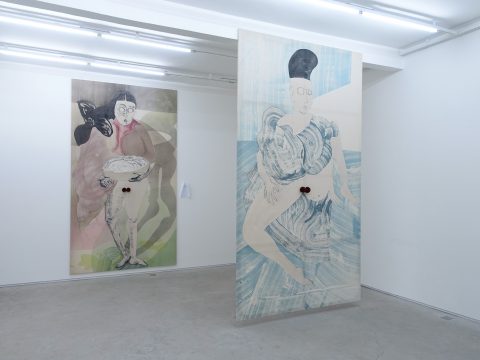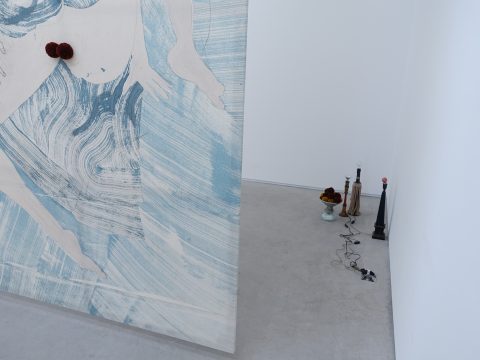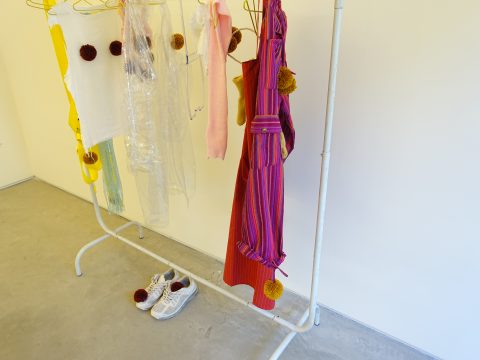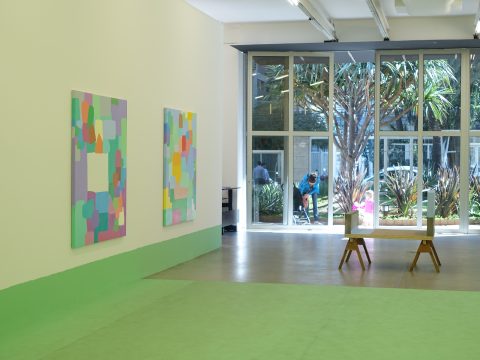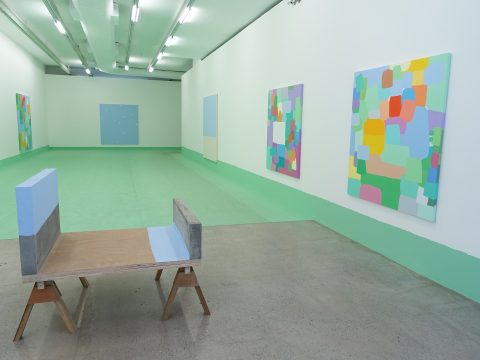Matthew Lutz-Kinoy and Federico Herrero: around space and through painting
- Matthew Lutz-Kinoy, Princess Pompom in the Villa of Flowers”, installation view at Mendes Wood DM.
- Matthew Lutz-Kinoy, Princess Pompom in the Villa of Flowers”, installation view at Mendes Wood DM.
- Matthew Lutz-Kinoy, Princess Pompom in the Villa of Flowers”, installation view at Mendes Wood.
- Federico Herrera, Desordem Alfabética, installation view at Galeria Luisa Strina.
- Federico Herrera, Desordem Alfabética, installation view at Galeria Luisa Strina.
- Federico Herrera, Desordem Alfabética, installation view at Galeria Luisa Strina.
Despite most of the art professionals are still recovering from Art Basel and the Petrobras scandal is still in the mind of many Brazilians, art scene in São Paulo seems so dynamic at the moment that even on Monday, the closing day of public museums and most of the private galleries, we managed to visit two amazing exhibitions.
The first one is the solo show Mendes Wood DM is dedicating to American painter and performer Matthew Luz-Kinoy (1984, New York), an artist we have spotted last year at Frieze London, and that a year later still affirms himself being a brilliant image maker. We didn’t attend to the opening, so we can’t comment on the performance, basically a dance initiating three Oriental-style paintings derived from Genji Monogatari – The tale of Prince Genji. This early novel – probably the first written novel in the human history – is a classic piece of Japanese Literature. Written between 1000 and 1008 it relates the story of Genji, the son of the emperor and his favourite concubine. Genji is uncommonly handsome and talented, and the first part of the tale is entirely dedicated to his many love affairs in and out Heian-kyo (Kyoto), the capital of the reign at that time.
A second important element to be taken into consideration when reading Luz-Kinoy’ show, is that the author of Prince Genij is female. To no Shikibu, known also as Murasaki Shibuku, was born in 978 and spent most of her life near the emperor Akiko as a lady-in-waiting. She was also a poetess, and her father, Master of Ceremony at the court, gave her the education generally reserved to male people.
With this in mind, the line of costumes welcoming the visitors and available to be worn during the viewing becomes an invitation to explore, and question a typical topic of Japanese fiction and also an element strongly related to Brazilian culture of disguise: sexual identity. Then the “curve” characterizing Lutz-Kinoy’s body language and painting is the visual key to the artist’s intimate approach to this evergreen matter.
The second show we visited is by Federico Herrero, the author of that amazing chromatic room recently seen at Art Unlimited in Basel. In that case the visitors were asked to take off their shoes and enter a circular structure reminding of primitive architecture, but with a fresh flux of pale colours revolving around green and blue. While in Sao Paulo, at Galeria Luisa Strina, the presence of the paintings – aggregating on two-dimensional surface colours addressing nature more than art, despite their artificiality – make the room looking like a planar structure wrapped around the physical space. The result is that air takes colour, green in this case, and you feel pleasantly immersed, even embraced by it. But it doesn’t look like the red room by Cildo Meireles (Red Shift I: Impregnation 1967–84), or James Turrel’s pivotal Gard Blue (1968). For Herrero colour seems to be a material, not a physical phenomenon.
June 30, 2015

